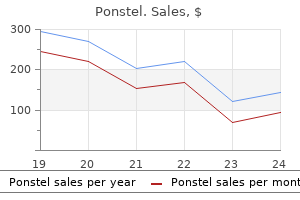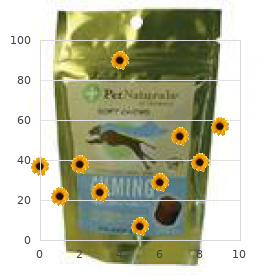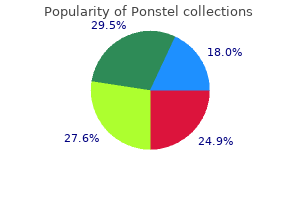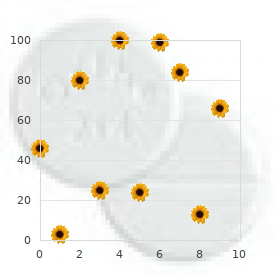Only $0.27 per item
Ponstel dosages: 500 mg, 250 mg
Ponstel packs: 60 pills, 90 pills, 120 pills, 180 pills, 270 pills, 360 pills
In stock: 560
10 of 10
Votes: 134 votes
Total customer reviews: 134
Description
C muscle relaxant cyclobenzaprine ponstel 500 mg free shipping, Edema caused by increased interstitial luid osmotic pressure from increased capillary permeability. Edema may be localized or generalized (existing in many areas of the body simultaneously). Increased interstitial luid osmotic pressure occurs when inlammation increases vascular permeability and proteins leak in to the interstitial luid. Lymphatic drainage normally removes minute amounts of protein that enter the interstitial luid. Decreased capillary osmotic pressure occurs when the concentration of plasma proteins is decreased, as in malnutrition or liver disease (decreased protein synthesis). In summary, edema represents increased interstitial luid volume, a condition that may be local or generalized. It is characterized by a low serum sodium concentration, which indicates that body luids are abnormally dilute. Clinical manifestations (confusion, lethargy, seizure, coma) occur because of cell swelling. It is characterized by a high serum sodium level, which indicates that body luids are too concentrated. Clinical manifestations (confusion, lethargy, seizure, coma) occur because of cell shriveling. The causes of edema at the capillary level are increased capillary hydrostatic pressure, increased interstitial luid osmotic pressure, blockage of lymphatic drainage, and decreased capillary osmotic pressure. The most clinically important electrolytes are the ions sodium, potassium, calcium, magnesium, chloride, bicarbonate, and phosphate. Although sodium ions are electrolytes, serum sodium imbalances are osmolality (concentration) imbalances, as explained previously in this chapter. This section discusses homeostasis and imbalances of potassium, calcium, magnesium, and phosphate ions. Bicarbonate is discussed in Chapter 25 because it is important in acid-base balance and imbalances. The concentration of an electrolyte in the plasma is different from its concentration inside cells. For normal body function, the electrolyte concentration must be normal in both areas. In clinical situations, the plasma (or serum) concentration of an electrolyte is measured. The concentration of an electrolyte in the plasma is the net result of four processes: electrolyte intake, electrolyte absorption, electrolyte distribution, and electrolyte excretion. Electrolyte homeostasis is the interplay of electrolyte intake and absorption, electrolyte distribution, electrolyte excretion, and electrolyte loss through abnormal routes. If electrolyte excretion or loss through abnormal routes increases, electrolyte intake also must increase to prevent electrolyte imbalance. Thus, if intake of a speciic electrolyte increases, excretion of that electrolyte also may increase and normalize the plasma levels.

Wandering Jenny (Moneywort). Ponstel.
- Are there safety concerns?
- How does Moneywort work?
- What is Moneywort?
- Dosing considerations for Moneywort.
- Skin problems such as eczema, killing bacteria, diarrhea, increasing saliva, cough, and other conditions.
Source: http://www.rxlist.com/script/main/art.asp?articlekey=96092
Seligsohn U spasms near gall bladder ponstel 500 mg order line, Kaushansky K: Classiication, clinical manifestation and evaluation of disorders of hemostasis. Borgna-Pignatti C, Galanello R: the thalassemias and related disorders: quantitative disorders of hemoglobin synthesis. Natarajan Kavita, Townes Tim M, Abdullah Kutlar: Disorders of hemoglobin structure: Sickle cell anemia and related abnormalities. Gallagher Patrick G: the red blood cell membrane and its disorders: Hereditary spherocytosis, elliptocytosis and related diseases. In Hoffman R, et al, editors: Hematology: basic principles and practice, ed 5, New York, 2008, Churchill Livingstone. What indings from the patient history, physical examination, or laboratory studies would indicate a potential bleeding disorder Hemostasis is accomplished via a complex interaction involving the vessel wall, circulating platelets, and plasma coagulation proteins. If hemostasis is inadequate, bleeding results; if hemostasis is excessive, inappropriate clotting or thrombosis results. This chapter reviews the process of hemostasis and describes how that process is evaluated by means of clinical assessment and laboratory tests. The focus of this chapter is disorders of hemostasis and coagulation that result in bleeding. The immediate response of the vessel to trauma is vasoconstriction to reduce blood loss. Although nervous relex may play a part, this vasoconstriction results primarily from local myogenic spasm that may last from minutes to hours. Platelets display a variety of cell surface receptors that mediate both adhesion to exposed subendothelium and aggregation with other platelets. Platelets not only adhere to endothelial collagen exposed by injury but also aggregate (clump together) at the site of vessel injury. Secondary hemostasis involves the formation of a ibrin clot, or coagulation, at the site of injury to maintain the hemostasis already initiated. Clotting factors are activated via the intrinsic pathway or extrinsic pathway, and participate in a series of events that catalyze or facilitate the conversion of ibrinogen to ibrin. Clot retraction, the inal stage of clot formation, occurs when the components of the ibrin clot-the platelet plug, ibrin strands, and trapped red blood cells-are compressed or contracted to form a irm clot. Aspirin and other cyclooxygenase enzyme inhibitors can be used to block this cascade. Platelets catalyze interactions between activated coagulation factors, accelerating the conversion of prothrombin to thrombin.

Specifications/Details
Interactions between the extracellular matrix and nearby cells are mediated primarily by binding proteins called integrins muscle relaxant 2265 ponstel 250 mg buy with amex. They enable the cytoskeleton and extracellular matrix to communicate across the plasma membrane in speciic ways. In addition to inducing cells to bind in a particular location, integrins have been shown to activate intracellular signaling pathways, which may inluence cell behavior in numerous ways. The steps leading to the development of differentiated tissues in a multicellular organism are such that, once differentiated, a cell type generally does not revert to earlier forms. Some cells in a tissue are terminally differentiated and have limited capacity to change form or replicate. Tissues also maintain less-differentiated stem cells that are able to proliferate depending on environmental cues. Some stem cells, located mainly in the bone marrow, are quite similar to embryonic stem cells and can be recruited in to tissues where they proliferate and differentiate in to tissue cells. The ability of these multipotent or pleuripotent stem cells to survive and differentiate correctly in their adopted home depends on making complex cell-to-cell and cell-tomatrix connections. In the absence of an appropriate environment, the cells will undergo apoptosis and die (see Chapter 4). Segments of other chromosomes are also highly condensed in to heterochromatin, which varies in different cell types. Mechanisms of Development Embryonic development is associated with selective gene expression that controls four essential processes to enable a single cell to develop in to a complex organism: (1) cell proliferation, (2) cell specialization, (3) cell-to-cell interactions, and (4) cell movement and migration. There is no overall controlling center; each cell must make its own developmental decisions. Differences between cells in an embryo are a necessary prelude to development of a multicellular organism and arise in various ways. Very early in embryonic development, cells begin to divide asymmetrically so that daughter cells are not identical-those on the outside of the group of cells receive different environmental cues than those on the inside, which are surrounded by other cells. These simple differences in cellto-cell adhesion may alter the transcription of a set of genes. The altered genetic expression will then be passed on to daughter cells in the next cell division, making them diverge further from the original cell. Thus cells become committed to a developmental pathway over the course of many cell divisions that transmit the history of previous exposures through sequential changes in gene expression. Continued interactions with nearby cells, chemical gradients, and extracellular matrix components provide clues to guide the cell to its appropriate form and location in the developing organism. Chemicals that control the patterning of ields of nearby tissue are termed morphogens.
Syndromes
- A child who has an illness with diarrhea usually will not need lactose-free formula.
- Several pieces of tissue are usually taken, and are sent to a laboratory for examination.
- Being older than age 35
- Medications that are toxic to the kidneys (such as aminoglycoside antibiotics or amphotericin)
- There is any change in the color or appearance of the wart.
- Phacoemulsification: With this procedure, the doctor uses a tool that produces sound waves to break up the cataract into small pieces. The pieces are then suctioned out. This procedure uses a very small incision.

Venous stasis ulcers also develop as supericial veins rupture with the increased pressures associated with activity spasms esophagus purchase ponstel 250 mg on line. Chronic venous insuficiency is primarily diagnosed clinically, but if necessary, ultrasound is considered the best method of evaluation. A, Lymphedema of an arm secondary to surgical alterations in the lymphatic system associated with mastectomy. Secondary lymphedema develops in association with a disease process or is iatrogenic (a consequence of medical intervention) in origin. Throughout the world, secondary lymphedema is most commonly caused by an infection by ilarial worms that migrate to the nodes of the lymphatic system, producing an obstruction of low. Infection by this nematode (Wuchereria bancrofti) affects more than 90 million people worldwide. In the United States, secondary lymphedema is most frequently caused by the surgical removal of lymph nodes, as with breast cancer, or by the destruction of the lymphatics from radiation therapy in the management of various malignancies. Most often, lymphedema affects the extremities, but it may be found in the region of the head and neck, trunk, or genitalia. Diagnosis is primarily one of exclusion, with other causes of localized edema being ruled out. The primary diagnostic test uses the injection of radioisotopes (lymphoscintigram) to assess the overall function of the lymphatic system. Surgical interventions are limited to very select patients, as they may actually be harmful. Resections (debulking) remove subcutaneous tissue and bypass procedures use lymphatic-venous anastomosis. The arrangement and unique structure of the circulatory vessels permit these functions to be accomplished. An understanding of the principles and control of low aids in the comprehension of the pathologic conditions that result in alterations in low. Principles of low, or the hemodynamics of the circulation, include concepts and physical laws relating to relationships of low, pressure and resistance, velocity, laminar and turbulent low, and wall tension and compliance. Lymphatic low is controlled through the lymphatic pump system, governed by skeletal muscle, and the smooth muscle of organs and arteries. Conditions that produce alterations in arterial or venous low are the result of one of these primary processes. Pathology of the lymphatic system is essentially the result of disruption of the normal pressure relationships or an obstruction within the circulatory system; proper functioning of the lymphatic system depends on the appropriate functioning of the vascular system.
Related Products
Additional information:
Usage: q.i.d.

Tags: discount 500 mg ponstel mastercard, discount ponstel 500 mg without a prescription, cheap ponstel 250 mg, buy 500 mg ponstel overnight delivery
Customer Reviews
Real Experiences: Customer Reviews on Ponstel
Campa, 36 years: In some individuals who have pathophysiologic conditions, loss of luid through abnormal routes also occurs. Occurs in older children, those with giant congenital pigmented naevi, immunosuppressed, previous chemotherapy, albinism, xeroderma pigmentosum.
Milten, 65 years: Compensatory Mechanisms and Stages of Shock A number of compensatory responses are set in motion to restore tissue perfusion and oxygenation in the early stage of shock. Few symptoms of pulmonary hypertension are manifested until the right side of the heart is affected.
Temmy, 43 years: This transporter is responsible for maintaining a low intracellular concentration of Na+ and a large Na+ gradient across the membrane. Depending on its severity, aortic stenosis is correctable and associated with a good prognosis.
Darmok, 28 years: For this reason treatment involves a 3-stage procedure with defunctioning colostomy, anorectal reconstruction, and then closure of the stoma. Impairment in low through the venous system interferes with the removal of metabolic waste products and causes luid pressure to accumulate in the system, a condition known as venous engorgement or venous obstruction.
Josh, 56 years: Macrophages are called on to clean up the area in which dead neutrophils and inlammatory debris have accumulated after an inlammatory reaction, and they have a role in wound healing. Typically children have an insatiable appetite with food-foraging and other behavioural problems.
Ugo, 58 years: Contact dermatitis, tuberculin reactions, transplant rejection, and graft-versus-host disease are examples. Although the kidneys cannot excrete carbonic acid, their ability to excrete more metabolic acid changes the ratio of bicarbonate ions to carbonic acid in a favorable direction so that the pH moves toward normal.
Vandorn, 27 years: This ability is affected by the surface hydrophobicity, the net surface charge, the binding molecules on the bacteria (ligands), and the interaction with the host cell. In the seventh week, rupture of the urogenital membrane gives the urogenital sinus a separate opening on the undersurface of the genital tubercle.
Oelk, 52 years: The irst three stages indicate severity of kidney injury and the last two stages represent patient outcomes. This polydrug therapy approach involves the administration of multiple antiretroviral agents.



